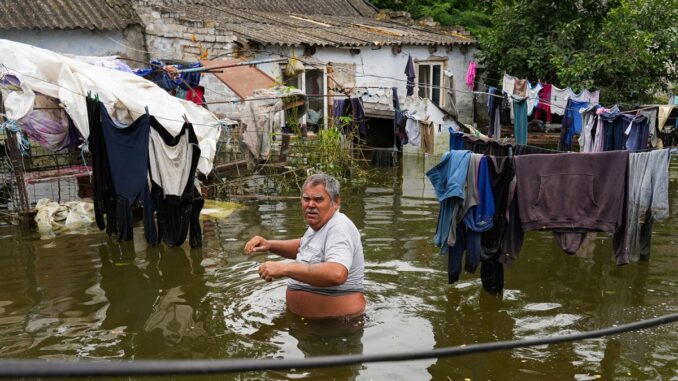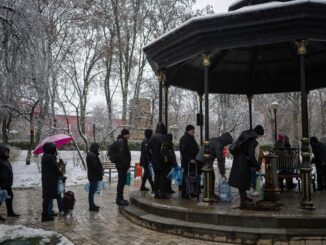
Moscow has rejected United Nations’ offers to help people in Russian-occupied areas affected by flooding from the collapsed Nova Kakhovka Dam.
The dam was breached on June 6, unleashing a wave of water from the Dnipro River on communities across southern Ukraine including Russian-occupied parts of the Kherson region.
The floods destroyed homes and farmland, forced the evacuation of thousands, contaminated supplies of drinking water and sparked fears of environmental disaster.
The UN urged Russia to act in accordance with its obligations under international humanitarian law.
“The UN will continue to do all it can to reach all people – including those suffering as a result of the recent dam destruction – who urgently need life-saving assistance, no matter where they are,” Denise Brown, UN humanitarian coordinator for Ukraine, said in a statement on Sunday.
“Aid cannot be denied to people who need it.”
The death toll from the disaster has risen to 52, with Russian officials saying 35 people had died in areas under its control and Ukraine’s interior ministry saying 17 had died and 31 were missing. More than 11,000 people have been evacuated on both sides.
Ukraine accuses Russia of blowing up the Soviet-era dam, which has been under Russian control since the early days of its full-scale invasion in 2022.
A team of international legal experts assisting Ukraine’s prosecutors in their investigation said it was “highly likely” the dam’s collapse was caused by explosives planted by the Russians.
This photo taken from drone footage, provided by the Ukrainian military and dated May 28, shows a car on the Kakhovka Dam that appears to be laden with explosives. The dam collapsed on June 6, while it was under Russian control [Ukrainian military via AP]
The Associated Press news agency reported Russia had “the means, motive and opportunity” to destroy the dam, citing drone photos and information from military and political sources in the area.
Russia has accused Ukraine of causing the dam breach but the various Russian allegations, including that it was hit by a missile, fail to account for a blast so strong that it registered on seismic monitors in the region.
The massive flooding that followed the explosion came as Ukraine was preparing to launch its counteroffensive and the Dnipro River forms the front line.
“It’s a regular practice, to mine (places) before a retreat,” Illia Zelinskyi, commander of Bugskiy Gard told the AP, recounting how the rising waters rapidly swamped their positions. “In this context, their actions were to disrupt some of our supply chains as well as complicate a crossing of the Dnieper [Dnipro] for us.”
Zelinskyi confirmed to the news agency that the explosion seemed to come from the area where the dam’s machine room was located. He and a United States official familiar with the intelligence both said Russian forces had been there for some time. The US official spoke on condition of anonymity to discuss sensitive material.
Photos, taken from Ukrainian drone footage and obtained by the AP, also showed dozens of Russian soldiers encamped on a bank of the Dnipro, looking relaxed as they walked back and forth to the dam with no cover.
A photo dated May 28 also showed a car parked on the dam, its roof cut open to reveal enormous barrels, one with what appeared to be a land mine attached to the lid and a cable running towards the Russian-held side of the river.
Although the car bomb itself would not have been enough to destroy the dam, it would have amplified any explosion originating in the machine room, a Ukrainian special forces communications official told the news agency.
Nova Kakhovka was one of a series of dams built along the Dnipro River in the Soviet era designed to withstand enormous force.
The release of the now-contaminated water has already forced the closure of popular Black Sea swimming beaches in Odesa and prohibited the consumption of fish and seafood from unidentified sources.
“The beaches of Odesa have been declared as unsuitable for swimming due to the significant deterioration of the water … and real danger to health,” Odesa’s administration said on the Telegram messaging app.
Water tests last week showed dangerous levels of salmonella and other “infectious agents,” Ukrainian officials said. Monitoring for cholera was also in place.
Levels of toxic substances in sea organisms and on the seabed are expected to worsen. There are also concerns about land mines washing up along the coast.
Massive flooding caused by dam breach has contaminated drinking water and led to bans on swimming and eating seafood.



